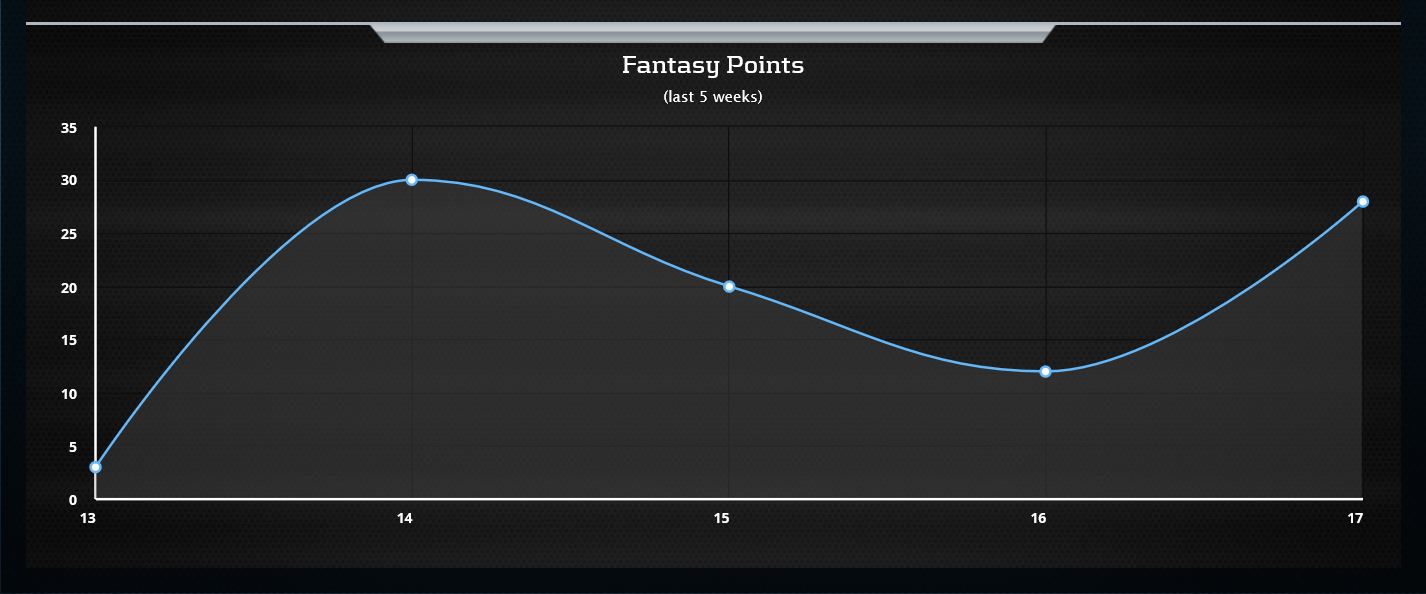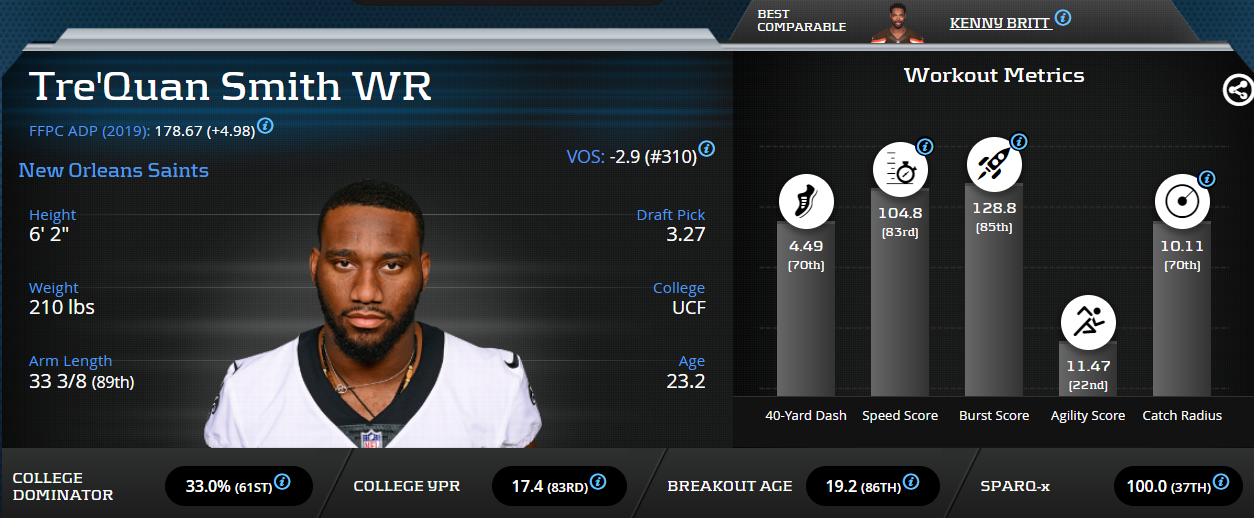Unlocking the potential of weekly player volatility in fantasy football gives gamers a competitive edge. Using matchup, volume and usage data combined with advanced stats, metrics, and analytics to pinpoint the best matchups will yield the best ROI from volatile players. A key metric on PlayerProfiler.com, Weekly Volatility measures a player’s week-to-week fantasy point scoring oscillation. Throughout the season, this article will track fantasy football’s most volatile players and provide insight on how to deploy them. The focus will be on those highly volatile players with low ownership percentages who make screaming waiver wire adds.
Meet the WR Archetypes
Volatility metrics play a big role in distinguishing between wide receiver archetypes and provides valuable information regarding their potential.
- Stable Studs: Players comparable to Davante Adams carry a high floor, high ceiling and low volatility degree. Adams’ 2018 weekly volatility mark (5.2) scored the lowest for a top-five receiver in PPR scoring. He boasted an incredible floor: 16.0 fantasy points per game.
- Volatile Studs: Players comparable to Julio Jones carry a moderate floor and a high ceiling. They consistently finish in the top-12 in fantasy points at the position and also in weekly volatility. Their volume and efficiency keep them afloat during weeks they don’t blast off.
- Boom-or-Bust Week Winners: Players comparable to Albert Wilson – owned in less than 10-percent of leagues on most major platforms – possess a low floor and a high ceiling. Perfect for flex spots, these players don’t have the high-floor upside that volatile studs do, but they do possess the ability to win a week when they boom. Mine the waiver wire for these prospects.
Meet the Weekly Volatility Master
Consider the most volatile wide receivers in the game; who comes to mind? Tyreek Hill. Antonio Brown. Stefon Diggs. Amari Cooper. Over the past three seasons combined, however, no receiver displayed a higher average weekly volatility rate than Julio Jones (10.2). Player Profiler’s rating system considers any mark greater than 10 to be very volatile. What does that mean in fantasy football terms? It may seem bad at first glance, and the argument that there are comparable players with much less weekly volatility cannot be ignored. Good thing we’re not talking about those players.
Factoring in Jones’ floor and 20.4 (No. 5 among qualified receivers) fantasy points per game average, it becomes clear that’s his makeup. He’s a must-start every week for those who roster him. Removing a Week 13 outlier game against Baltimore in which he ran 23 routes, Jones never scored fewer than 11 fantasy points per game last season. That’s a decent floor.
During that 2016-2019 span, he finished No. 6 (2016), No. 7 (2017) and No. 4 (2018) among receivers in PPR fantasy formats. He appears to be shedding his volatility though, evidenced by his 7.7 mark in 2018. The main factor? Touchdowns. His eight TDs in 2018 marked five more than he had in 2017 and two more than he had in 2016. A classic case of positive regression.
Check out Julio Jones on PlayerProfiler’s “World Famous” Draft Kit:
Remember the volume part of this equation? Jones led the league in targets in 2018, ranked No. 7 in 2017 and No. 19 in 2016. The sheer amount of targets headed boosts his production.
https://www.youtube.com/watch?v=QXOofiX3PG8
Exploit the Matchups
A well-constructed fantasy roster boasts a majority of high-floor, upside players combined with one or two high-ceiling, low-floor players whose weekly volatility scare off the masses. These are often the players the casual gamer does not want to roster. Use that to gain an advantage. Finding that player with the perfect mix of high volatility and low ownership percentage translates to fantasy gold. While volatile studs make better matchup-proof plays, boom-or-bust archetypes require a bit more maintenance. Using the plug-and-play method doesn’t work with them.
Take Albert Wilson and Tre’Quan Smith, who garnered less than 20-percent ownership in leagues on the major platforms. Both players displayed a high level of weekly volatility last season: Wilson with a 10.1 (No. 6) number and Smith with a 10.2 (No. 5) mark.
Smith posted zero fantasy points on four separate occasions but also had two top-five finishes at the position. He roasted Josh Norman in Week 5 and finished with 26.1 fantasy points. His next outburst came against Philadelphia and cornerback Rasul Douglas during Week 11, a game in which he scored 31.7 fantasy points. Norman finished last season with a -13.8 (No. 75) Coverage Rating and Douglas, at -13.1, didn’t fare any better. Use CB/WR matchups to exploit the potential of volatile players.
Go Below the Surface
Digging deeper, the Eagles (No. 3) and Redskins (No. 9) ranked in the top-10 for most fantasy points allowed per game to opposing receivers (30.96). Gamers who did their homework on those matchups capitalized with massive ROI.
In the seven games before his injury, Wilson scored 20-plus fantasy points twice but also failed to reach 10 fantasy points four times. Feast or famine. Wilson garnered 11.2 (No. 3) yards per target while finishing with 0.78 (No. 1) fantasy points per pass route and 2.77 (No. 2) fantasy points per target. He also racked up 331 (No. 24) yards after the catch, a testament to his efficiency. He’s a diminutive burner who runs a 4.43 (87th-percentile) 40-yard dash and can stretch the field. There’s a great chance Wilson won gamers their Week 3 and Week 6 matchups: he scored 21.5 and 33.0 fantasy points, respectively. On weeks that he doesn’t boom, he won’t wreck a lineup because his expected production doesn’t match his ceiling.





